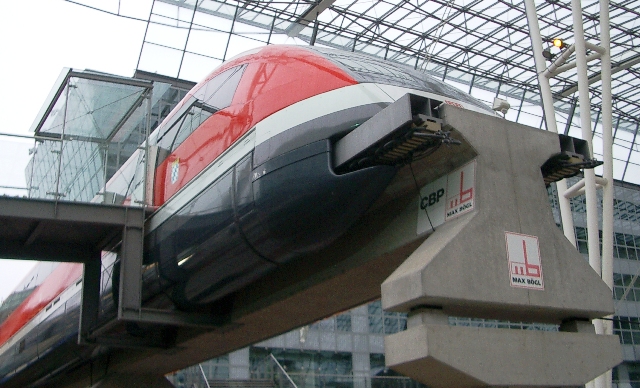
Advanced applications like MagLev trains would be
greatly enhanced by room-temperature superconductors.
This is a technology so amazingly useful that we do almost whatever is neccessary to create materials with superconducting properties. Discovered in 1911 by a Dutch physicist named Heike Onnes, Superconductivity is a property imparted to certain metals, organic compounds, and ceramics when reduced to temperatures near absolute zero. Recent advances have created superconducting materials that can operate at liquid nitrogen temperatures instead of requiring colder and more expensive helium. The problem hindering development was we didn’t really know how it all worked.
Until now.
Superconductors are a class of materials that conduct electricity with no resistance. They are already used in MRI medical imaging scanners, levitating trains, and power lines. High temperature superconductors have no resistance at temperatures as high as –140 degrees Celsius, but advances in this area have been stalled due to a lack of understanding of their fundamental properties.
“We were able to supply our collaborators with the purest sample ever developed, leading to the discovery of quantum oscillations,” said Bonn. “This provides unequivocal proof that these materials are metals.”
It doesn’t take Larry Niven to point out that a room-temperature (or anything even close to it) superconductor would be A Very Good ThingTM. Such a material would save a phenomenal amount of energy just in the reduction of transmission loss alone.















Room temperature (or even frozen CO2 temp -78,5C) superconductors would perhaps give us the boost needed in supercolliders to advance physics to the point of proving/disproving superstring theory, enable new theories to unite relativity and gravity, give us cars that would get hundreds of miles per gallon of fuel, billions of dollars back on electric bills, and on and on. I can’t wait. The gains would be so enormous, it boggles the mind.
I can’t wait for someone to hinder this amazing discovery by issuing not only a crippling patent but also a morbidly high royalty fee for using it.
Angel (#2),
Sadly you are so right.
As soon as someone comes up with that room-temperature superconductor, the U.S. military will swoop in, grab all the plans, data, and samples, and “disappear” the scientists.
#4, Seeing as the team is from British Columbia, I think the discovery stands a good chance of entering the public domain.
At least I hope. For all the reasons mentioned by BubbaRay.
What this could offer just in 2 items would make me happy as a clam:
Cheap high-output windpower. I plan on eventually going that route with some supplemental solar where I live, anyway. This would make it a breeze. 🙂
And electric cars would become really practical, really soon.
UBC – my Alma Mater.
No matter, the U.S. military will swoop in …. and disappear the country. We stood on guard for thee.
Hey, ditto. Tuum Est, bro. Remember the Hong Kong Kitchen; sticky buns, SUB Theatre, Lady Godiva, VW on clock tower, The Pit, Gage Towers? :^) Or am I showing my age?
Now I was sure there were near-room temp superconductors invented. Turns out they were all disproven to be so. Still, there are a few out there claiming such status:
http://www.ultraconductors.com/about_us.html
RBG
8,
The nice thing about claims like that is they all eventually have to function. Bullshit goes only so far in engineering.
Judging by the linked release, all they really claim is to have proved superconductors are metals. (I guess that means at low temperatures some ceramics magically transform into metals?) Taking that to room-temperature superconductors is a bit of a leap, seems to me.
Or maybe the real achievement was growing material of such high purity, in amounts large enough to work with. If that can be scaled up, no doubt some mind-boggling discoveries would follow.
Am I mssing something here?
11,
The acheivement is that research without understanding is fumbling. Now that they understand the why, they can improve the how.
#11, Alix, that’s right. Previous attempts to discover superconducting materials were mainly shots in the dark with often disappointing results. Perhaps now research can produce some new and exciting materials.
RGB. Yes, I remember pretty much all of those things. We’re both showing our age (I was more of a date square for 25 cents man than a sticky bun man). And Tuum Est, it’s up to you. Hong Kong Kitchen has resurrected underground, not far from where it burned down. The food is still not gourmet, but plentiful and cheap. I was in Physics, but lab work didn’t agree with me so I ended up in Math. So just a few decades, some insight, and a lot of dedication separated me from this great discovery. It was up to me, I didn’t know what.